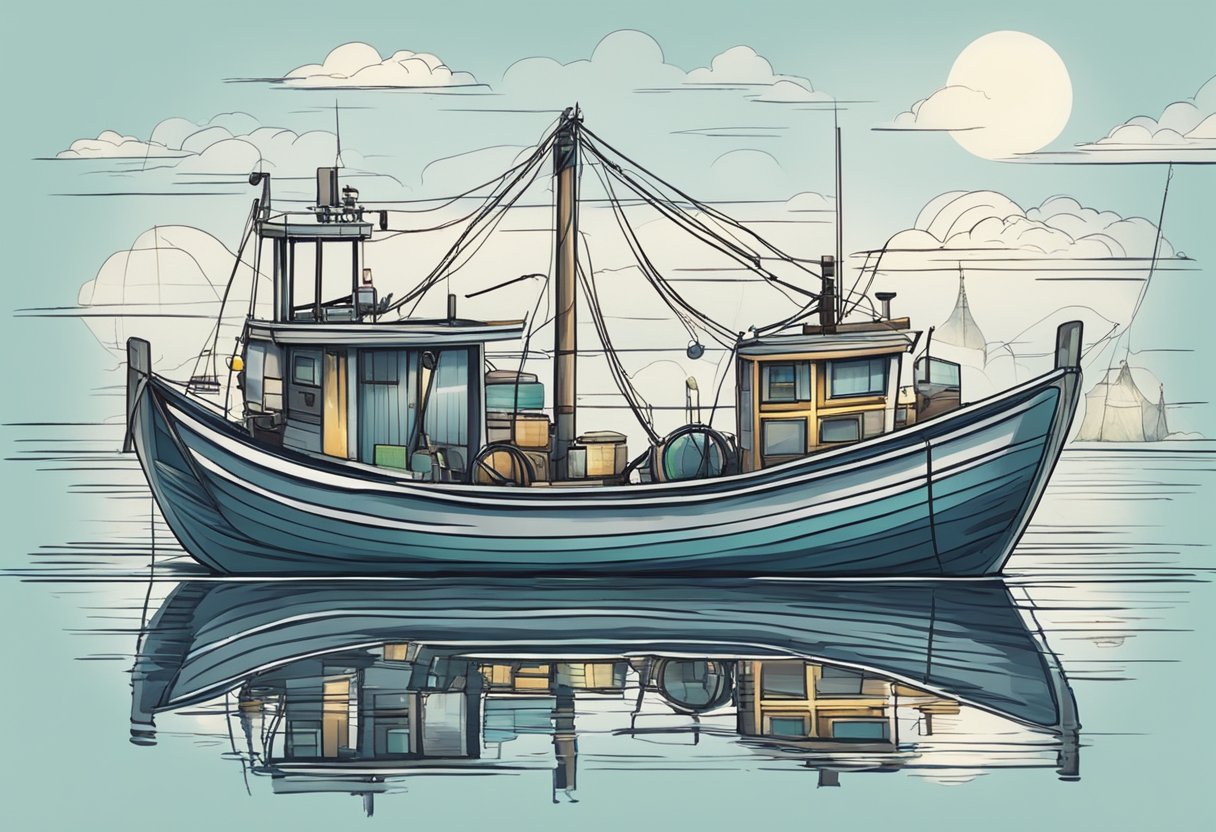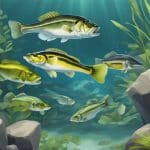Types Of Fishing
Fishing is a popular outdoor activity that can be enjoyed by people of all ages and skill levels. There are many different types of fishing, each with its own set of techniques, equipment, and environments. Understanding the different types of fishing can help you choose the right method for your needs and preferences.
To begin with, it is important to understand the various fishing methods available. These include bait fishing, fly fishing, spin fishing, trolling, and more. Each method requires a different set of skills and equipment, and can be used to target different types of fish. By learning about the different fishing methods, you can choose the one that best suits your interests and abilities.
In addition to the fishing methods, it is also important to consider the different environments and techniques used in fishing. For example, freshwater fishing is different from saltwater fishing, and ice fishing requires a different set of skills and equipment altogether. By exploring the different environments and techniques used in fishing, you can gain a better understanding of the sport and become a more successful angler.
Key Takeaways
- Understanding the different types of fishing methods is crucial for choosing the right one.
- Different environments and techniques require different skills and equipment.
- Exploring the different types of fishing can help you become a more successful angler.
Understanding Fishing Methods

Fishing is an activity that involves catching fish from water bodies such as rivers, lakes, and oceans. There are different types of fishing methods, each with its own set of techniques and equipment. In this section, we will explore the three main categories of fishing methods: angling, commercial fishing, and recreational fishing.
Angling
Angling is a type of fishing that involves using a hook, line, and bait to catch fish. It is also known as sport fishing or recreational fishing. Anglers use different types of bait, such as worms, insects, and fish, to attract their target fish. They may also use lures, which are artificial baits designed to mimic the movement of real fish.
Angling can be done from the shore or from a boat. It is a popular activity around the world, and many people enjoy it as a hobby. Angling is also a competitive sport, with tournaments and competitions held in various locations.
Commercial Fishing
Commercial fishing is a type of fishing that is done for profit. It involves catching fish in large quantities and selling them to markets or processing plants. Commercial fishing is a major industry around the world, providing food and employment for millions of people.
There are different types of commercial fishing methods, such as trawling, longlining, and gillnetting. Each method has its own set of techniques and equipment. Commercial fishing can have a significant impact on the environment, and there are regulations in place to ensure sustainable fishing practices.
Recreational Fishing
Recreational fishing is a type of fishing that is done for fun or relaxation. It is also known as sport fishing or angling. Recreational fishing is a popular activity around the world, with millions of people enjoying it as a hobby.
Recreational fishing can be done from the shore or from a boat. It is regulated by laws and regulations to ensure the sustainability of fish populations. Recreational anglers are required to follow catch limits and size restrictions to prevent overfishing.
In conclusion, understanding fishing methods is important for anyone who wants to take up fishing as a hobby or profession. Angling, commercial fishing, and recreational fishing are the main categories of fishing methods, each with its own techniques and equipment. By following sustainable fishing practices, we can ensure that fish populations remain healthy for future generations.
Fishing Environments and Techniques
Fishing is a popular recreational activity enjoyed by many people around the world. It can be done in a variety of environments, each with its own unique challenges and techniques. In this section, we will discuss the different types of fishing environments and techniques used in freshwater, saltwater, and ice fishing.
Freshwater Fishing
Freshwater fishing is done in lakes, rivers, and streams that are not connected to the ocean. These bodies of water are home to a variety of fish species, including bass, trout, and catfish. Freshwater fishing techniques include baitcasting, spinning, and fly fishing.
Baitcasting involves using a baitcasting reel and rod to cast a lure or bait into the water. Spinning involves using a spinning reel and rod to cast a lure or bait into the water. Fly fishing involves using a fly rod and reel to cast an artificial fly into the water. Each technique requires different equipment and skills.
Saltwater Fishing
Saltwater fishing is done in the ocean or in saltwater bays and estuaries. Saltwater fishing techniques include trolling, bottom fishing, and surf fishing. Trolling involves dragging lures or bait behind a moving boat to attract fish. Bottom fishing involves dropping bait to the bottom of the ocean or bay to catch fish that live near the ocean floor. Surf fishing involves casting a line from the beach into the ocean.
Saltwater fishing requires different equipment and skills than freshwater fishing. Saltwater reels and rods are typically larger and more durable than freshwater reels and rods.
Ice Fishing
Ice fishing is done on frozen lakes and rivers during the winter months. Ice fishing techniques include jigging and tip-ups. Jigging involves using a baited hook and a jigging rod to attract fish. Tip-ups involve setting up a flag that will be triggered when a fish bites the bait.
Ice fishing requires specialized equipment, including ice augers to drill holes in the ice and shelters to protect from the cold.
In conclusion, fishing can be done in a variety of environments, each with its own unique challenges and techniques. Freshwater fishing, saltwater fishing, and ice fishing each require different equipment and skills. By understanding the different types of fishing environments and techniques, anglers can improve their chances of catching fish and have a more enjoyable fishing experience.
Tackling the Equipment
Fishing requires specialized equipment, and choosing the right gear can make or break a fishing trip. Here are some essential pieces of equipment to consider when heading out for a day on the water.
Rods and Reels
Fishing rods and reels are the most important pieces of equipment for any angler. The type of rod and reel you choose will depend on the type of fishing you plan to do. For example, baitcasting reels are best for heavy lures and lines, while spin casting reels are better for lighter lures and lines.
When selecting a fishing rod, consider the power, action, and length. Power refers to the rod’s strength and ability to handle different fish species. Action refers to the flexibility of the rod, and length determines the casting distance.
Baits and Lures
Baits and lures are essential for attracting fish. Live bait, such as worms or minnows, can be effective for catching a wide range of fish species. Artificial flies are often used in fly fishing, while lures such as spoons and jigs are popular in spin fishing.
When selecting baits and lures, consider the type of fish you are targeting and the water conditions. Brightly colored lures are often used in clear water, while darker lures are better for murky water.
In addition to rods and reels and baits and lures, other important pieces of fishing tackle include hooks, sinkers, and floats. By selecting the right equipment, anglers can increase their chances of catching fish and have a successful day on the water.
Targeting the Catch
When it comes to fishing, one of the most important aspects is targeting the catch. Different types of fish require different strategies and techniques to catch them successfully. Here are some tips and tricks to help you target specific species and practice conservation and ethics.
Species-Specific Strategies
For bass fishing, it is important to use lures that mimic their natural prey, such as frogs or crayfish. Bass tend to hide in vegetation or near structures, so casting near those areas can increase your chances of success.
Trout fishing requires a more delicate approach. Using lightweight equipment and small lures or bait can increase your chances of catching them. Trout tend to hide in shaded areas or near rocks, so casting near those areas can be effective.
Salmon fishing is often done in rivers or streams. Using a technique called “drift fishing” where the bait or lure is allowed to drift with the current can be effective. Salmon also tend to be attracted to bright colors, so using bright lures or bait can increase your chances of success.
Pike and walleye fishing requires using large lures or bait to attract their attention. These fish tend to be found in deeper waters or near structures, so casting near those areas can be effective.
Marlin fishing is typically done in deep sea waters. Trolling with large lures or bait can be effective in attracting these fish. It is important to practice catch and release with marlin due to their vulnerable status.
Conservation and Ethics
It is important to practice conservation and ethics when fishing. This includes following all fishing regulations and laws, practicing catch and release, and using sustainable fishing practices.
Spearfishing, trapping, gigging, and noodling are all controversial methods of fishing that can harm the environment and fish populations. It is important to consider the impact of these methods before using them.
By targeting specific species and practicing conservation and ethics, anglers can help preserve fish populations and ensure a sustainable future for fishing.
Advanced Fishing Techniques
When it comes to fishing, there are many techniques that anglers can use to improve their chances of catching fish. Advanced fishing techniques require specialized equipment and skills that are beyond the basics of fishing. In this section, we will discuss two advanced fishing techniques: fly fishing and deep sea and big game fishing.
Fly Fishing
Fly fishing is a technique that involves using a lightweight lure, called a fly, to catch fish. This technique is often used in freshwater streams and rivers, but it can also be used in saltwater environments. Fly fishing requires a specialized rod, reel, and line, as well as a variety of flies to match the type of fish being targeted.
One of the key skills in fly fishing is casting. Anglers must learn how to cast the fly line in a way that mimics the natural movement of insects on the water. This can take time and practice to master, but it can be a rewarding technique for catching fish.
Deep Sea and Big Game Fishing
Deep sea and big game fishing are techniques that are used to catch large fish in the open ocean. These techniques require specialized equipment, such as large fishing reels, heavy-duty fishing line, and strong fishing rods.
Trolling is a common technique used in deep sea and big game fishing. This involves dragging lures or bait behind a moving boat in order to attract fish. Jigging is another technique that can be used to catch fish in deep water. This involves dropping a weighted lure to the bottom of the ocean and then jerking it up and down to attract fish.
Longlining is another technique used in deep sea fishing. This involves setting a long line with multiple hooks, and then waiting for fish to take the bait. Kite fishing and drone fishing are also advanced techniques that are used in deep sea fishing to target specific species of fish.
Spear fishing and bow fishing are techniques that are used to catch fish without using a rod and reel. These techniques require specialized equipment and skills, and are often used in shallow water environments.
Overall, advanced fishing techniques require specialized equipment and skills that go beyond the basics of fishing. Anglers who are looking to target specific species of fish or catch larger fish may want to consider using these techniques to improve their chances of success.






